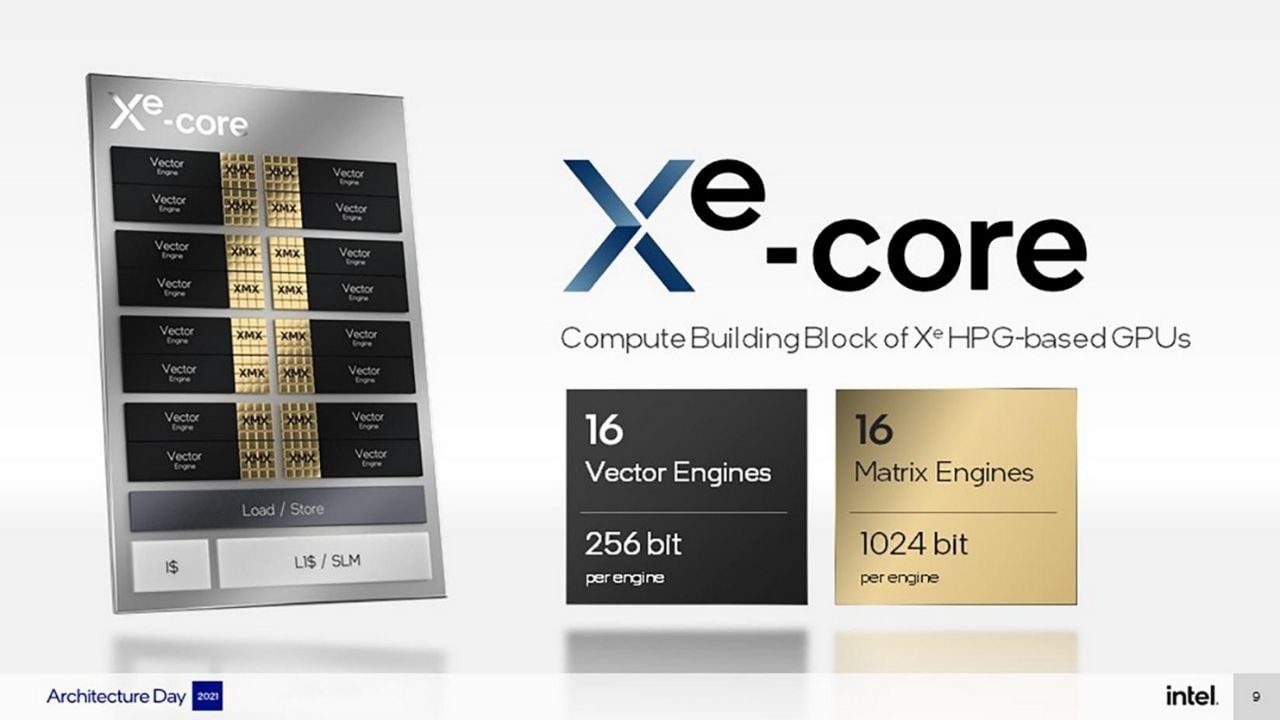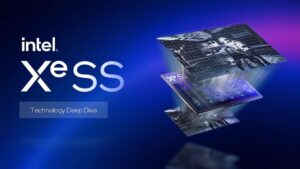Intel’s newest lineup of gaming graphics cards, now dubbed Intel Alchemist, will come equipped with a frame rate boosting technology called Xe Super Sampling (XeSS).
While this has been common knowledge, we have new information that states Intel hopes to deliver a 2x performance boost with this AI-powered upscaling technology. The company is also looking to bring this technology to competitor cards.
Intel has stated that the idea for this new upscaling technology has come from the disdain expressed towards those already in the market. They say the current tech asks players to sacrifice too much by expecting them to pick between high frame rates or high visuals.
But, it wouldn’t be wrong to think that this is Intel looking to compete with NVIDIA’s DLSS and AMD’s FidelityFX Super Resolution technology. Intel has to play a lot of catch-ups if it wants its first generation of gaming graphics cards to keep up with Team Red and Team Green.
But, regardless of the reason behind this technology, Intel says that the answer lies with AI-augmented supersampling.
XeSS is powered by a deep learning neural network that reconstructs subpixel details from neighboring pixels and motion-compensated previous frames to improve overall clarity without drastically increasing GPU load.
In simpler terms, it is similar to NVIDIA’s DLSS as it uses deep learning to improve the upscaling process. How they achieve this is another story, but the result should be more or less similar, i.e., high frame rates with minimal reduction in picture quality.
It is also taking a leaf out of AMD’s book by doing something similar to the original FidelityFX Super Resolution patent, released in May. Here, the where the jitter and pixel shuffle steps look to be doing similar things.
Intel has reported a performance boost of up to 2x with this technology. It has also stated that it should allow players capped at 1080p and low settings due to their hardware to run their games at 4K.
To achieve this, XeSS will be powered by dedicated AI accelerated silicon (dubbed XMX or Xe Matrix Extensions) that has been built into Intel’s Alchemist graphics cards and the Xe-HPG architecture.
One thing to note about XeSS is that Intel will offer a version for Intel’s own Arc-banded graphics cards, accelerated by XMX, and another that will work on both its own integrated GPUs and competitor cards.

Intel expects a slight dip in performance in the second version, as it will be powered by the DP4a instruction, but this could put some serious heat in both NVIDIA and AMD if done right and made widely available in-game.
We’re enabling XeSS on a broad set of hardware, including our competition. We accomplished this by using the DP4a instruction, which is available on a wide range of shipping hardware, including Iris Xe integrated and discrete graphics.
Speaking of games, we have no idea which games will support Intel’s new tech. It may even require training on a per-game basis. So, it’s hard to say how quickly the industry will adopt this new technology.
Intel has stated that as XeSS grows, it wants to “open-up XeSS SDK and tools for everyone to implement.” This SDK should be available before the end of August, so devs should have time with it before their cards release in Q1 2022.
About Intel
Intel Corporation is an American multinational corporation and technology company headquartered in Santa Clara, California, in Silicon Valley. It is the world’s largest semiconductor chip manufacturer on the basis of revenue, and is the developer of the x86 series of microprocessors – the processors found in most personal computers (PCs).
Incorporated in Delaware, Intel ranked No. 46 in the 2018 Fortune 500 list of the largest United States corporations by total revenue.









No Comments on Intel XeSS to Compete Against DLSS and FSR, Can Work on Any GPU